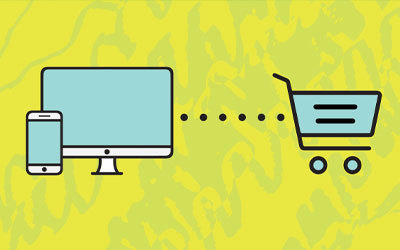Programmatic

Written By
Wray Ward
Traditional television households will decline 7.5% in 2020, the result of an already growing exodus further fueled by the COVID-19 pandemic. By 2024, cord-cutters will outnumber traditional TV subscribers. But where are all of those eyeballs going — and should your brand follow them?
Viewers are flocking to over-the-top television.
Over-the-top television (OTT) consists of streaming video services available directly to viewers on the internet or cellular networks. Services include Amazon Fire TV, Roku, Apple TV+, Google Chromecast or your smart TV at home. While the majority of viewing is done on TVs, content can be streamed on desktop, tablet or mobile devices.
OTT puts consumers in control of the what, how and when of program viewing.
The future is live.
Experts predict that livestreaming will make up the majority of video streaming growth over the next few years (think: refreshing for new election coverage or the latest score of a game).
- Millennials comprise the largest group consuming live content, with 63% watching regularly.
- Meanwhile, older audiences are quickly adjusting their media consumption habits: More than 30% of people aged 55+ now have an OTT subscription (up from 19% in 2019), and the percentage of subscribed 45- to 54-year-olds is skyrocketing as well.
Here are some things to consider about OTT:
It’s a captive audience.
- Consumers who have sought out an OTT program are emotionally invested in what they’re viewing.
- In many cases, OTT ads are non-skippable.
It’s highly targeted.
First-party data may be the most attractive benefit for some advertisers. Similar to digital advertising, OTT’s first-party data enables advertisers to define and narrow their target audience. This allows brands to capitalize on information, such as shopping habits on Amazon, directly captured by the OTT provider. As third-party data phases out in some media due to new legislation, first-party data will become a crucial go-to resource.
It’s scalable.
OTT is underutilized by advertisers. The platform represents only 3% of current ad spend, even though audiences are spending 29% of their time there, according to eMarketer.
It’s impactful.
- By offering access to premium inventory and avoiding waste exposure, OTT enables advertisers to position themselves alongside household name brands across all levels of programming, including Prime.
- For the home and building industry, video offers a way to show the before and after — with impact.
Download our full report on OTT advertising including key terms to know and measurement considerations. In the meantime, contact us if you have questions or need assistance navigating the oft-changing media landscape.


